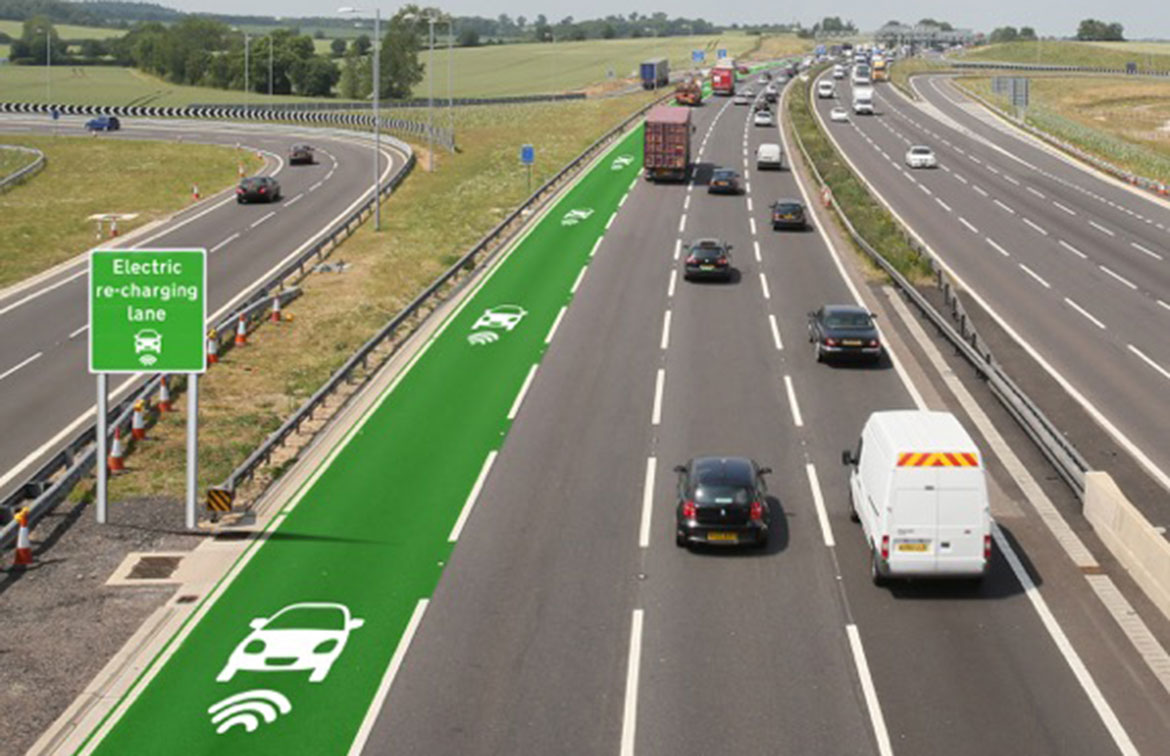New steel-inspired research is looking to transform the world’s highways into wireless recharge-as-you-drive power stations for electric cars
Electric vehicles haven’t had the easiest journey. In their quest for mass acceptance they’ve needed to navigate a number of obstacles, from dismal looks to uninspiring performance.
Fortunately recent models have proved that electric vehicles, or EVs for short, can be every bit as handsome as their fossil-fuelled counterparts. From entry-level models like the Volkswagen e-Up to high-end performance options like BMW’s i8, long gone are the days that environmental awareness translated to aesthetic unconsciousness.
Tesla also successfully turned uninspiring e-performance on its head, most recently announcing a model that will rip to 60mph in a blisteringly quick 2.5 seconds – that’s faster than a Ferrari 488 GTB!
So not only are many modern electric vehicles dashingly good-looking, they can also be a huge amount of fun to drive with sparkling performance to boot. But that still leaves one pervading issue. For as long as electric vehicles have been quietly whizzing through our streets, they’ve had to deal with a major stumbling block: limited range, and the subsequent emotional condition of range anxiety. But all that could be about to change thanks to research by a Japanese university.
Professor Ohira and his colleagues developed technology they call “via-wheel power transfer”.
Cutting wires on EVs
“Many customers hesitate to buy an EV due to its short cruising range and the problem that EVs must repeatedly stop to recharge their onboard batteries,” explains Professor Takashi Ohira from the Toyohashi University of Technology, who led the research study. “That was why we started this project.”
Professor Ohira and his colleagues developed technology they call “via-wheel power transfer”, or V-WPT, which offers dynamic powering of vehicles. The result? An ability to recharge a car’s battery while it drives over an electrified surface, unlike other wireless powering schemes which require the vehicle to be stationary while it charges.
“Short-range wireless power transfer is nothing new, and has been extensively applied in smaller applications like wireless phone chargers or even the humble electric toothbrush,” comments Professor Peter Wilson, Professor of Electronic and Systems Engineering at Bath University’s Powertrain and Vehicle Research Centre. “Typically such wireless charging takes place over less than 5mm however, for a vehicle it is necessary to be able to transfer the energy over a much wider gap.”
To overcome the issue of distance between the road surface and the car itself, Professor Ohira and his fellow researchers exploited the steel belt usually embedded in rubber tyres. This steel belt collects power excited from a pair of steel electrodes that are buried beneath the road surface, similar to an entrenched railway line. And, since the tyres’ steel belt is electrically insulated by the rubber tread, the researchers used a displacement current at high frequency to reach the belt from underneath the road.
“To construct this system, we needed a pair of long parallel co-planar steel plates beneath the road surface from which electric energy propagates to reach the running vehicle. The vehicle then picks the energy up via its tyres,” explains Professor Ohira.“It works in much the same way as a railway train,” he continues, “where the electricity comes from the overhead wire, and goes via a pantograph to reach the motor before it returns via the wheels to the rails below the train.”
EVs that work with the road
Similarly, the university’s system sends the high-frequency current through the right metal plate and via a right wheel to reach the motor, and it returns via a left wheel to the left metal plate. According to Prof. Ohira steel was the best choice for this project because of its conductive qualities and mechanical strength, and because it can be used over a great distance at reasonable cost – as demonstrated by steel’s extensive use for railway lines.
 The roads of the future could have lanes specifically for electric charging.
The roads of the future could have lanes specifically for electric charging.
According to the University of Bath’s Professor Wilson, one of the advantages of electrifying the highway itself is that vehicles can receive an on-going “trickle charge”, rather than having to stop for a static rapid charge. “This reduces the power rating required of the power electronics and wiring in the vehicle, making it potentially much cheaper and smaller.” And because the EVs are still fitted with a battery, moving away from the electrified surface won’t cause them to power down, just to start tapping into their battery reserves.
Futuristic though this technology might sound, a number of large-scale feasibility studies are currently being conducted around the globe to explore its implementation. One such project is FABRIC – the FeAsiBility analysis and development of on-Road charging solutions for future electric vehicles – a four-year and €9-million project, which involves 24 partners from nine European countries that is currently underway at test sites in France, Italy and Sweden.
Real-world slot cars that are powered by the road surface might sound like science fiction, but thanks to these recent breakthroughs it could be closer to becoming science fact.
Images: Honda and Highways England
Video: Toyohashi University of Technology